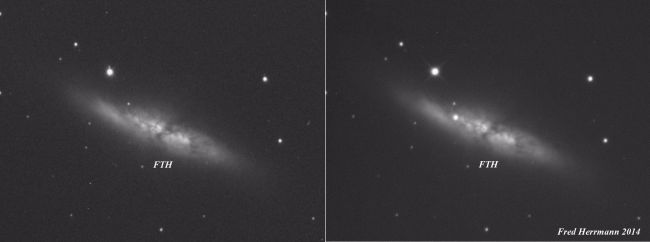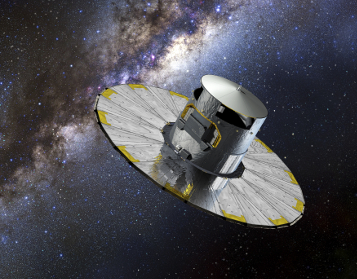
Credit: Fred Herrmann
A sky survey is a map of a region of the night sky. It is a very useful tool for finding supernovae. The map is compared to past maps of the same area. Any 'new' stars that were not there before may be supernovae. The All-Sky Automated Survey for Supernovae is a good example of this kind of survey.
Technology can be very helpful when carrying out a sky survey. Computer software can compare maps and spot new objects very quickly. Modern telescopes also have wider fields of view. This allows even small telescopes to view a large patch of the sky at once.

Credit: European Space Agency (ESA)
Sometimes telescopes find supernovae while doing other research. A great example of this is the European Space Agency's Gaia mission. Gaia measures the positions of stars and other objects more precisely than any other space telescope. The data are being used to make a 3D map of the Milky Way. Since its launch in 2013, Gaia has added over 1 billion stars to its map! This makes it the largest, most precise map of our galaxy so far.
To make its 3D map, Gaia had to scan parts of the sky several times. It found 100s of objects per day which had got brighter since the last scan. We call objects that change in brightness, transients. They can be caused by quasars, variable stars, exoplanets, and asteroids, as well as supernovae. Any 'new' objects that Gaia finds are made public within 2 or 3 days through the Gaia Alert System.
